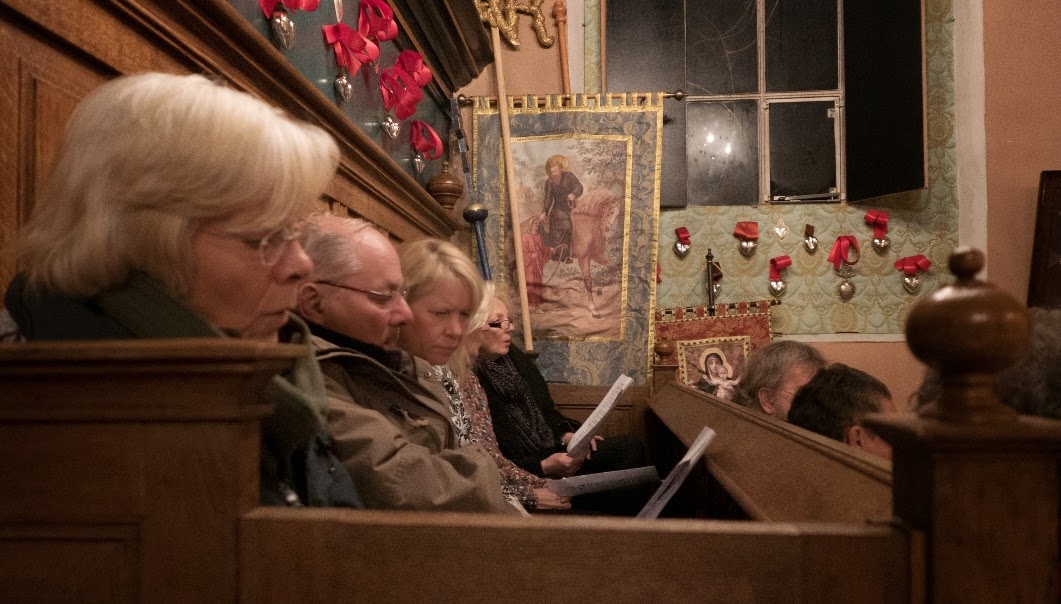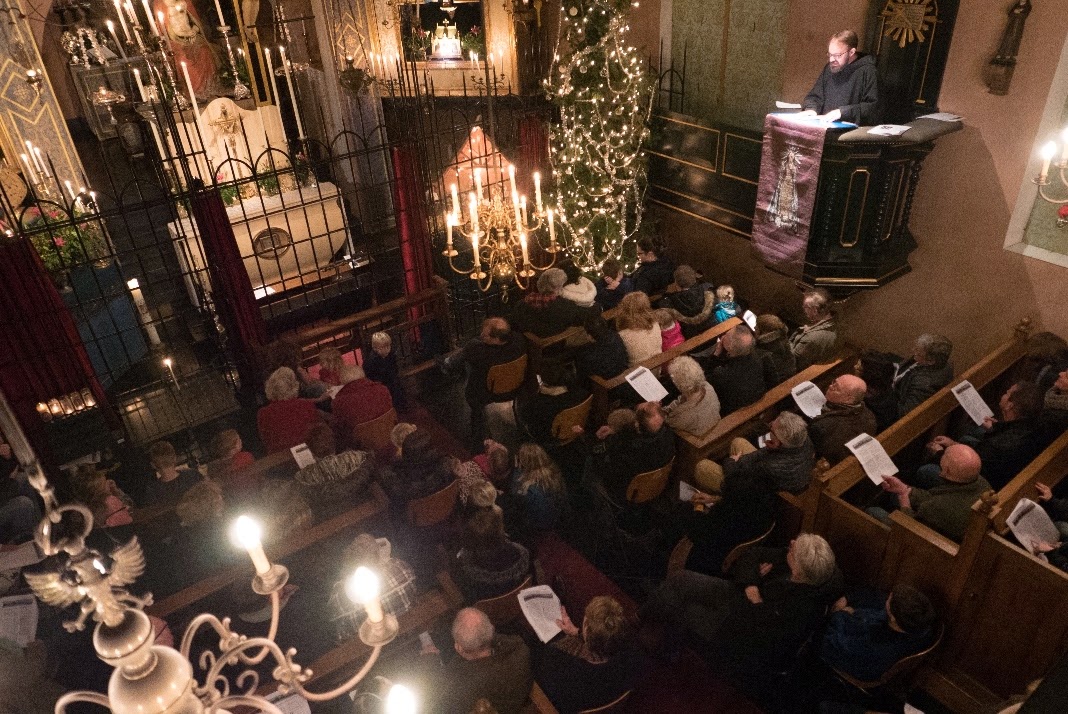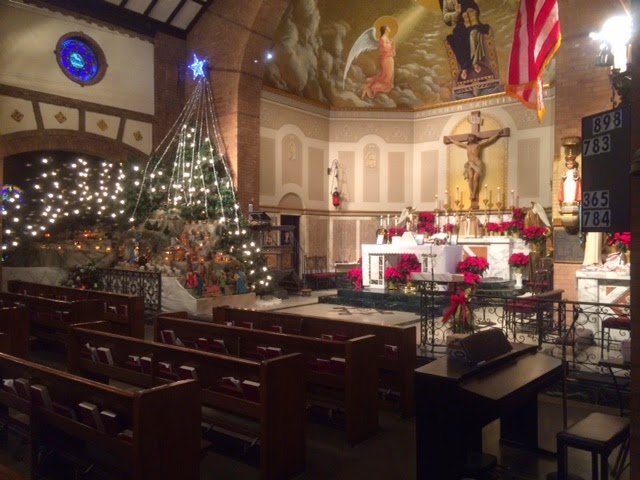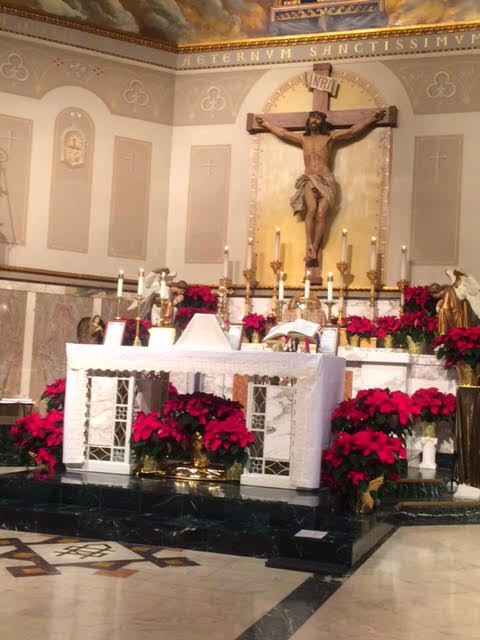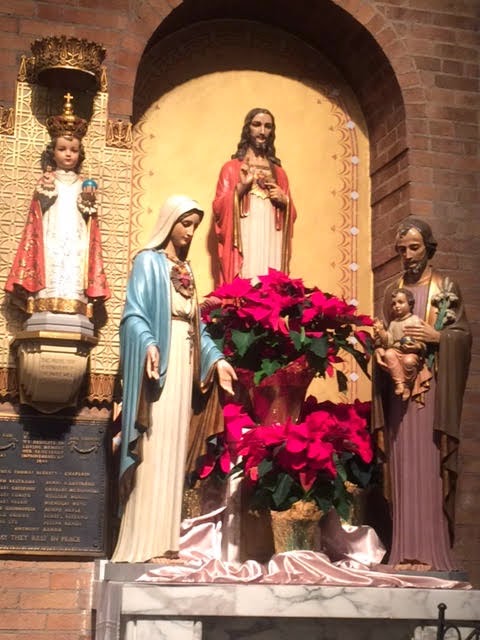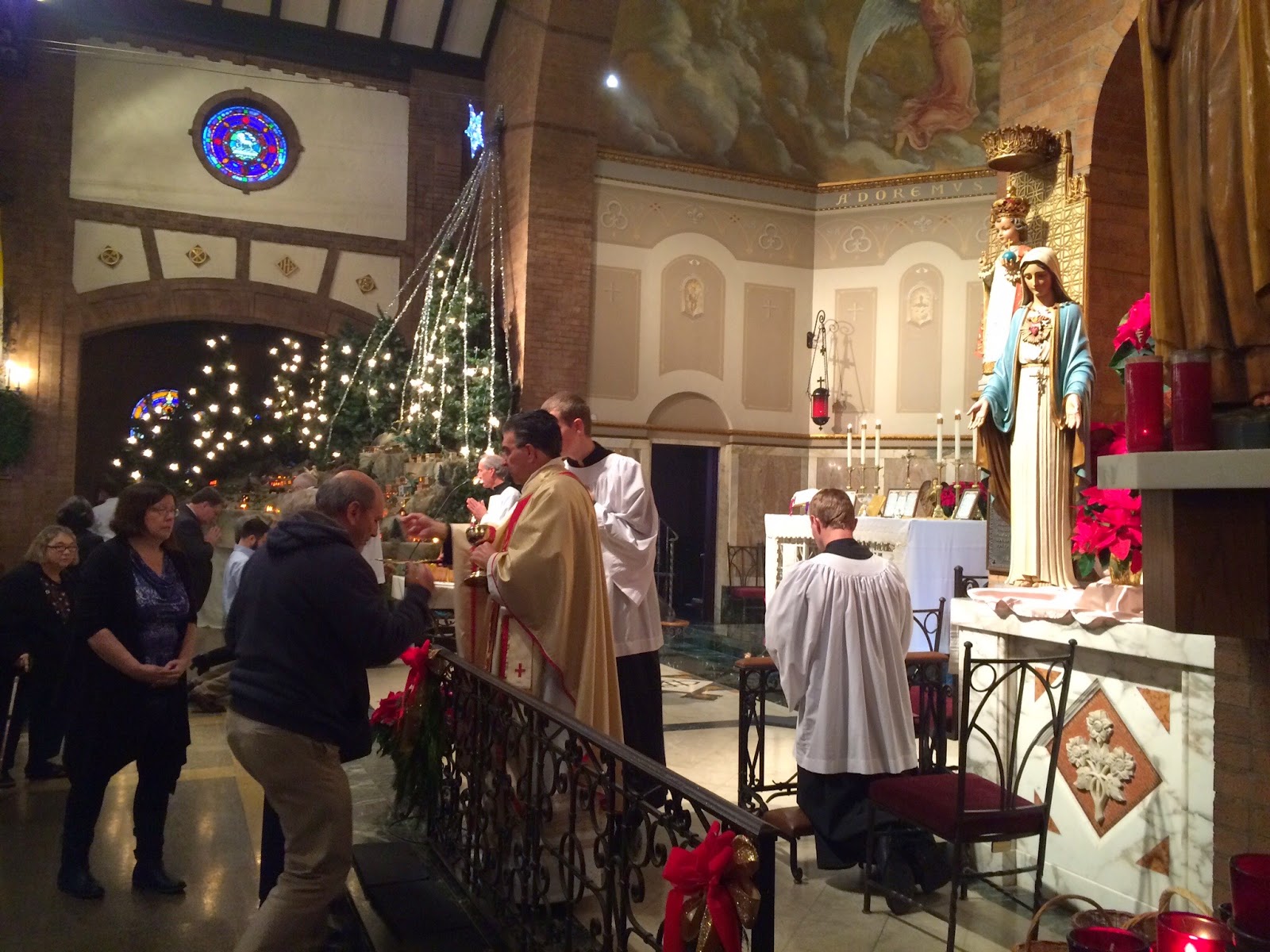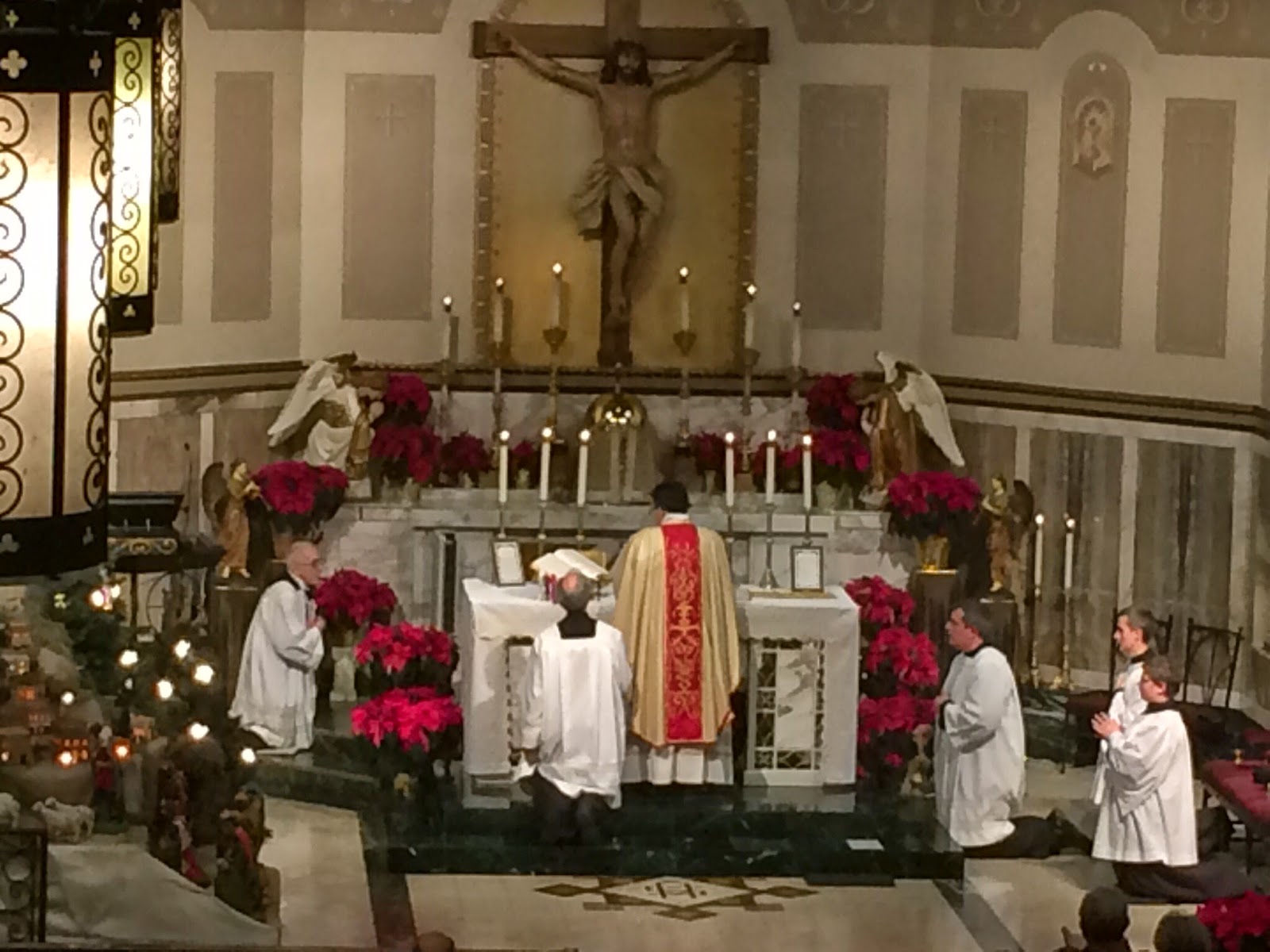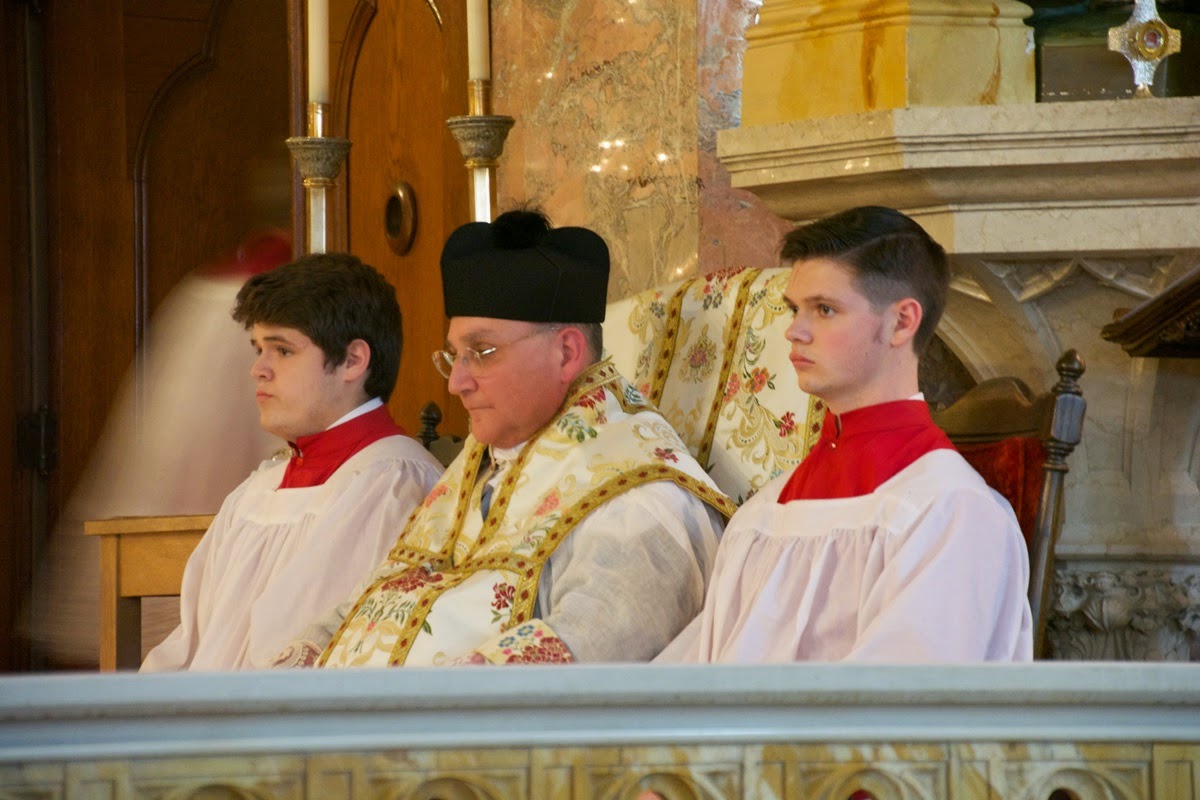![]() |
| Master of Portillo, Mass of St Gregory |
It is well known that the Novus Ordo Missae divides the Mass into four parts: the Introductory Rites; the Liturgy of the Word; the Liturgy of the Eucharist; and the Concluding Rite. It is perhaps less known among Catholics today that this is a modern schematic and that the much more ancient distinction—still found in the traditional Latin Mass—is between the Mass of the Catechumens and the Mass of the Faithful. As we bask in the effulgence of the Incarnate Word, it would be well to reflect on why this ancient way of speaking is superior to the modern way.
The central and definitive “word” is Jesus Christ, the
Logos or
Verbum of the Father, made flesh for us men and for our salvation. It follows that the liturgy of the Word
par excellence is the Holy Eucharist itself. To go further, the liturgy of the Word, in the fullest sense, must be the Eucharistic
sacrifice, because in this sacrifice the Word which is “spoken” by the Father is offered back to Him, thanks to His human nature, in a perfect self-offering—and this oblation of Christ on the cross is the sole reason we ourselves can receive, can be made “hearers of,” the word of God in nature and in divine revelation. If, instead, one appropriates “word” to the Bible, then this portion of public worship, in terms of the phenomenology of the Mass, risks becoming an equal to the Eucharist, if not its superior.
The
verbum Domini or Word of the Lord is the
Logos, Jesus Christ Himself.
Verbum caro factum est, et habitavit in nobis. It also refers to the “word” (in the idiomatic sense of that which summarizes: “in a word…”) of consecration, which is the mystery of faith,
mysterium fidei. Christ, above all, is this mysterium fidei; all other sacred mysteries are such because of their being rooted in Him or flowing from Him. The Church is a mysterium because she is united to Christ, the great mystery,
magnum mysterium. Through the consecration, we are taken from the promise of revelation (the Mass of Catechumens) to the Real Presence (the Mass of the Faithful)—a transition from
verbum (in the ordinary sense of something spoken) to
res (in the sense of the thing signified by word).
The problem, then, with the phrase “Liturgy of the Word” is that the Word, as such, is fully and really present only in the Liturgy of the Eucharist, when the
Word Himself is personally present in His divinity and glorified humanity. The sign of the difference is that, while we offer incense to the Gospel in honor of Him whose Gospel it is, it would be sinful for someone to bow down and adore the lectionary, placing his faith and trust in it, and loving it above all things, whereas it is precisely this adoration or
latreia that must be given to most holy Eucharist; indeed, as Saint Augustine says (and Benedict XVI often quotes him to this effect), we would be guilty of sinning were we not to adore It.
A Protestant confusion is thus introduced and subtly fostered. According to the Catholic faith, “God’s Word” is chiefly and primarily in the Holy Eucharist because it
is Jesus Christ, and only secondarily in the Sacred Scriptures that contain His teaching and bear witness to Him. Like all mere signs, Scripture will pass away in heaven, as the Book of Revelation teaches: “I saw no temple in the city, for its temple is the Lord God the Almighty and the Lamb. And the city has no need of sun or moon to shine upon it, for the glory of God is its light, and its lamp is the Lamb” (Rev 21:22-23). Like all mere signs, it is only for the wayfarer. In Protestant churches, one often sees the Bible sitting up on the main altar, where the tabernacle ought to be, as though at the center of Christianity were a
book, something written in lifeless letters on lifeless paper; such an architectural arrangement expresses the very essence of the Protestant heresy, where words replace the Word in His living and life-giving flesh and blood. The Novus Ordo structure follows, in a sense, this verbalistic architectural schema, which makes it more understandable that in Catholic churches all over the world the tabernacle was removed from the center and placed off to the side, usually
not in a place of great honor.
No one could have appreciated more than the Jewish Christians of the early Church how vast and profound a change was inaugurated by Christ in the New Covenant. It might seem logical, then, that they should discard the old forms of worship (the old wineskins, as it were) in favor of new ones. But nothing of the sort happened; the Christian worship grew organically out of the pre-existent Jewish worship. When the Christians began to worship exclusively in their own communities, no longer visiting the synagogue for the service of readings, they nevertheless kept and fostered the Jewish traditions in their own Eucharistic worship. The very fact that the Christians saw in the Holy Eucharist the fulfillment of what the Jews read about in their Scriptures indicates that the liturgical connection was understood to be much deeper than merely two back-to-back segments of ritual, one pertaining to “books” and the other to “sacrament” or “mysteries.” From a Patristic perspective, the division of “Mass of the Catechumens” and “Mass of the Faithful” renders the relationship far more accurately: the catechumens are those who, whether Jew or Gentile, remain on the outside of the fold but are approaching entrance to it, whereas the faithful are those who have embraced Jesus Christ as their Lord in the mysteries of initiation and can now, entering into the Holy of Holies,
reap the fruits foretold in the Scriptures that are read aloud to everyone (including the catechumens).
![]() |
| The Temple of Solomon |
The tradition teaches us continuity, not rupture and discontinuity, even in the midst of the most radical religious shift the world has ever seen within one religious tradition: from the Mosaic law to the grace of Christ, from the Torah to the Cross, from the many sacrifices of the Old Covenant to the one all-holy and all-sufficient sacrifice of the New Covenant. It was a transition not from letter to spirit, but from a cosmic catechumenate to an eternal fidelity, from one Mass to another Mass—or rather, a seamless transition from the outer chamber of expectant preparation to the inner chamber of loving communion.
How strange it is that, in so many respects, the attitude and decisions of those who replaced the organically developed Roman liturgy with a committee-generated fabrication treated the preceding form of Catholic worship as
more foreign than the early Christians had treated the worship of the Israelites! Perhaps it is no more strange than the general loss of a sense of obligation or bond to God’s revelation of Himself in the past. We would rather have our own creation from our own time period than something handed down to us by our ancestors. Needless to say, this mentality is profoundly unscriptural, untraditional, unecclesiastical. One may wonder if it is not ineluctably bound up with the Hegelian (or Teilhardian) model of inexorable historical progress through the constant overcoming of the given, as we all march towards Absolute Spirit. But this way madness lies.
The Incarnation is the pivotal point, not the present moment; and the Christ who is the same yesterday, today, and forever, who has been given to us in the apostolic rites of the Church, is the measure of our doctrine and practice—not our own sociological models or theoretical constructs.




















































